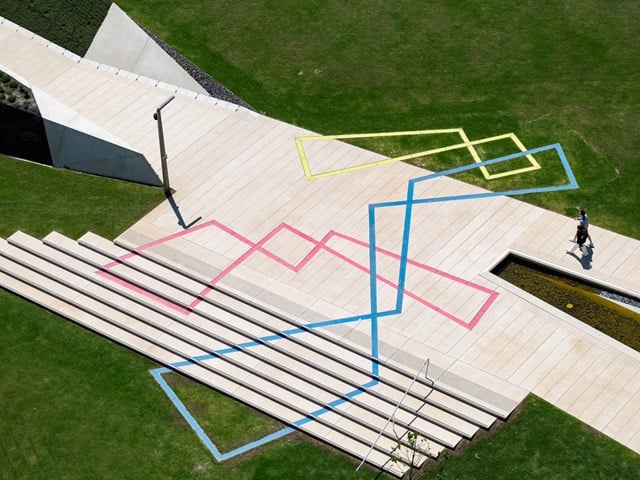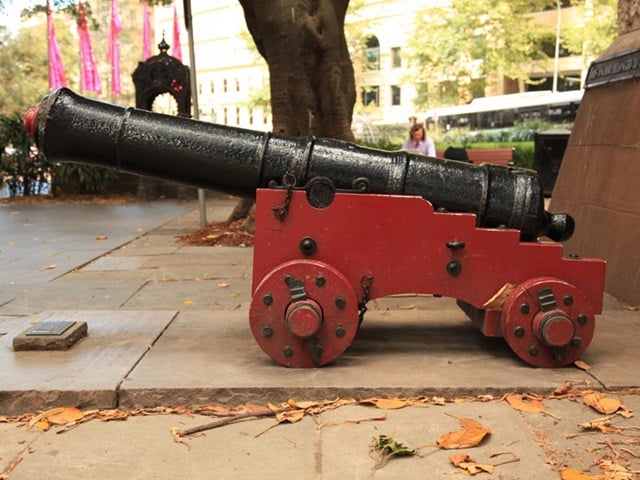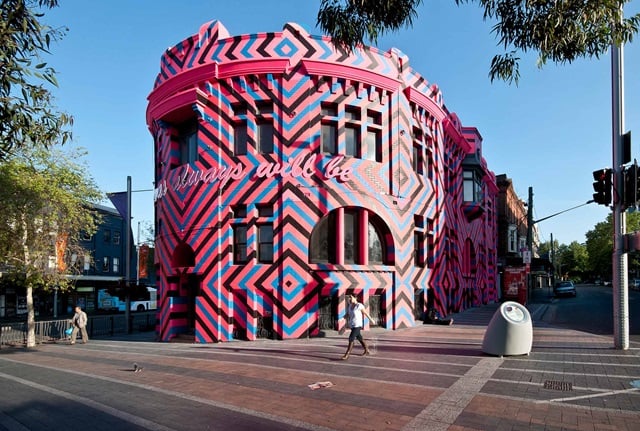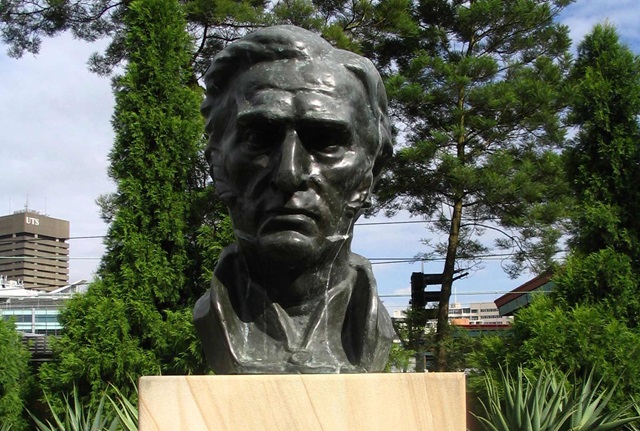
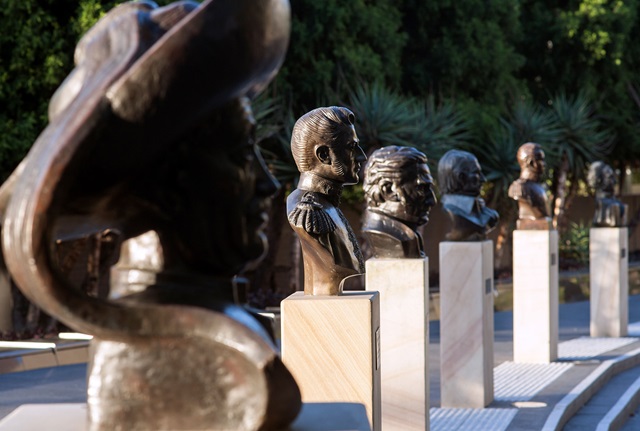
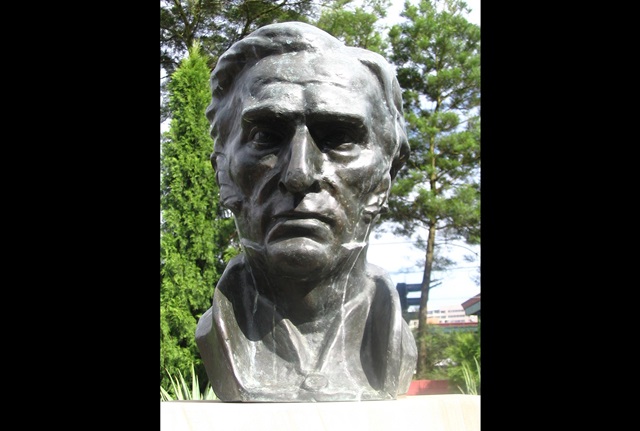
A granite bust of Uruguayan national hero Jose Artigas sits on a sandstone plinth.
Artwork description
The bust of Uruguayan national hero Jose Artigas is made from granite and stands on a sandstone base around 1.5m tall.
It is one of a series of busts of famous Latin American heroes displayed at Ibero American Plaza. The series on Chalmers Street commemorates the contribution of Spanish and Portuguese speaking people to the history of Australia.
More information
Jose Gervasio Artigas was born in Montevideo on 19 June 1764. He was a gaucho (cowboy) until 1810 when he was attracted to the patriotic cause of independence for Uruguay. Artigas commanded the Uruguayan patriots from 1810 to 1811 in the war of independence against Spanish troops and liberated all of Uruguay except the city of Montevideo. He then became the spokesperson for those disenchanted with the leadership of Buenos Aires.
In 1815 he was involved in a successful siege of Montevideo and entered Buenos Aires in triumph. He was defeated in 1816 when Portugal invaded Uruguay. Buenos Aires refused to support him and after a 4-year struggle his forces were defeated and he went into exile in Paraguay.
Following Uruguayan independence in 1828 Artigas was invited to return but declined the invitation. He died on 23 September 1850 and is well remembered for his thoughts on social reform, independence and ‘the principles of Federalism in Instructions of 13’ which were incorporated in the constitution on 1852.
Commission
The bust of Artigas was the first of the statues at Ibero American Plaza to be sent to Sydney. It arrived in January 1988 on the bicentennial tall ship Miranda but was not presented to the City of Sydney until 27 September that year.
It was unveiled on 4 February 1989. The bust was later replaced in 2010.
Inscription
A plaque on the sandstone plinth reads:
Uruguayan national hero and revolutionary leader.
Remembered for his thoughts on social reforms and social justice conceived long before the revolutions of the 20th century. He was also the architect of the feeling of uniqueness and regional pride that eventually led to the independence of Uruguay.


